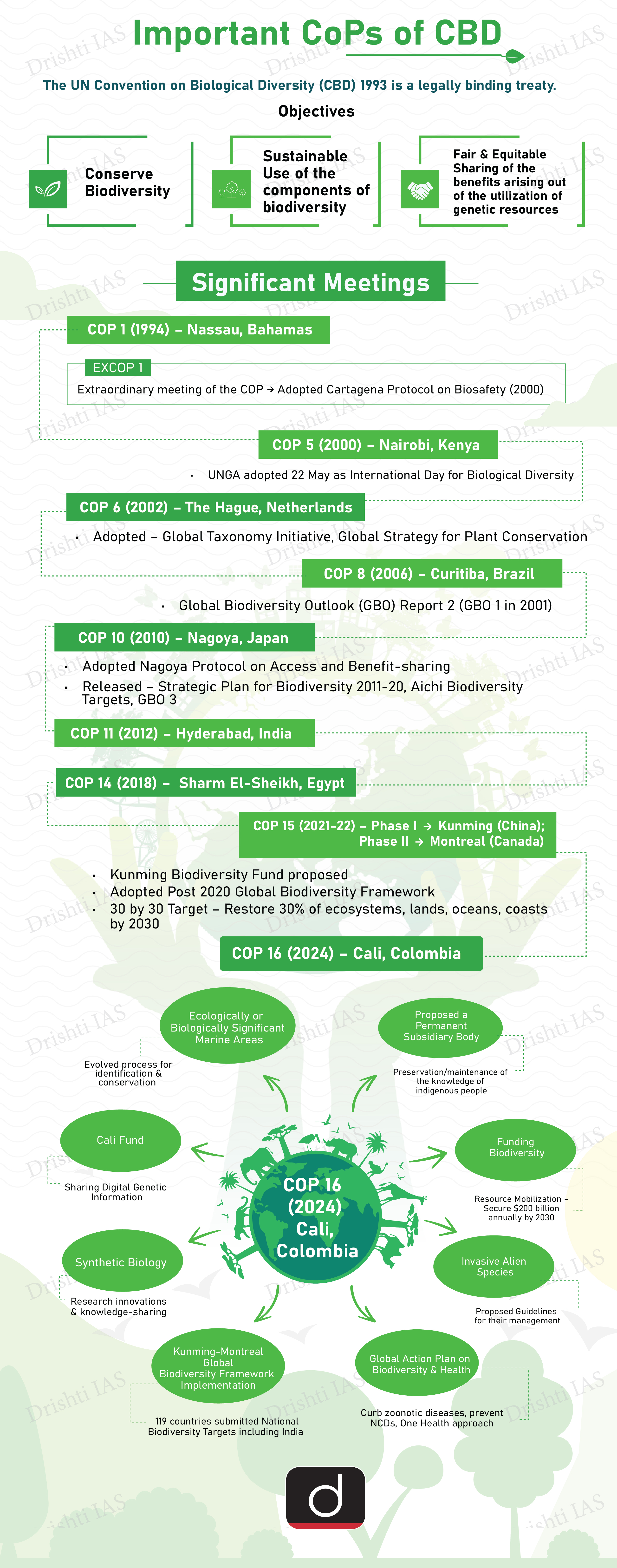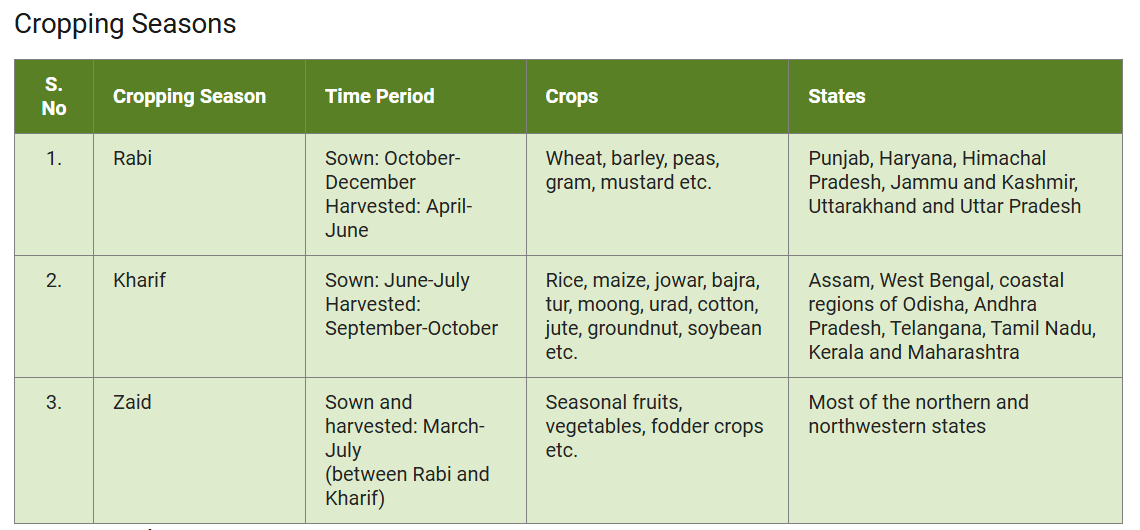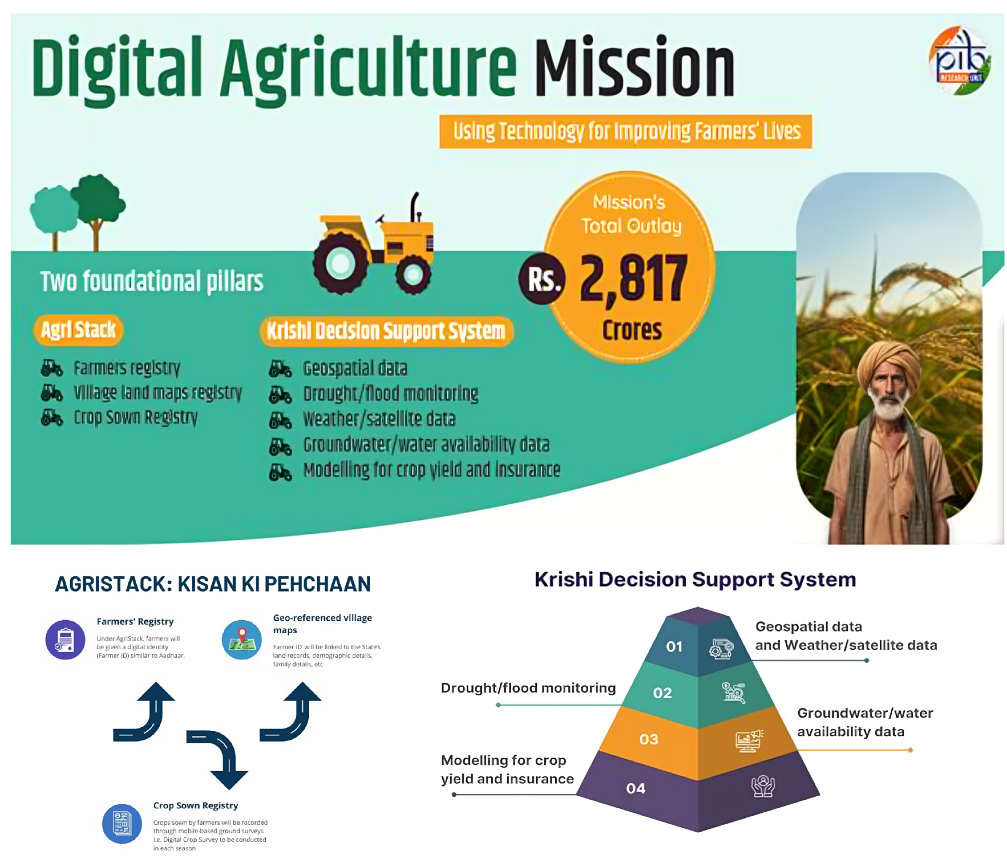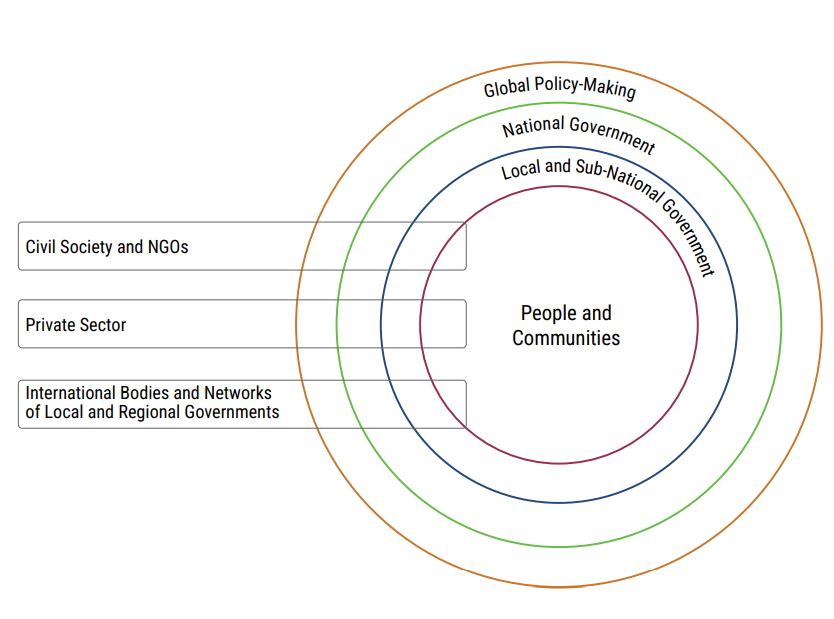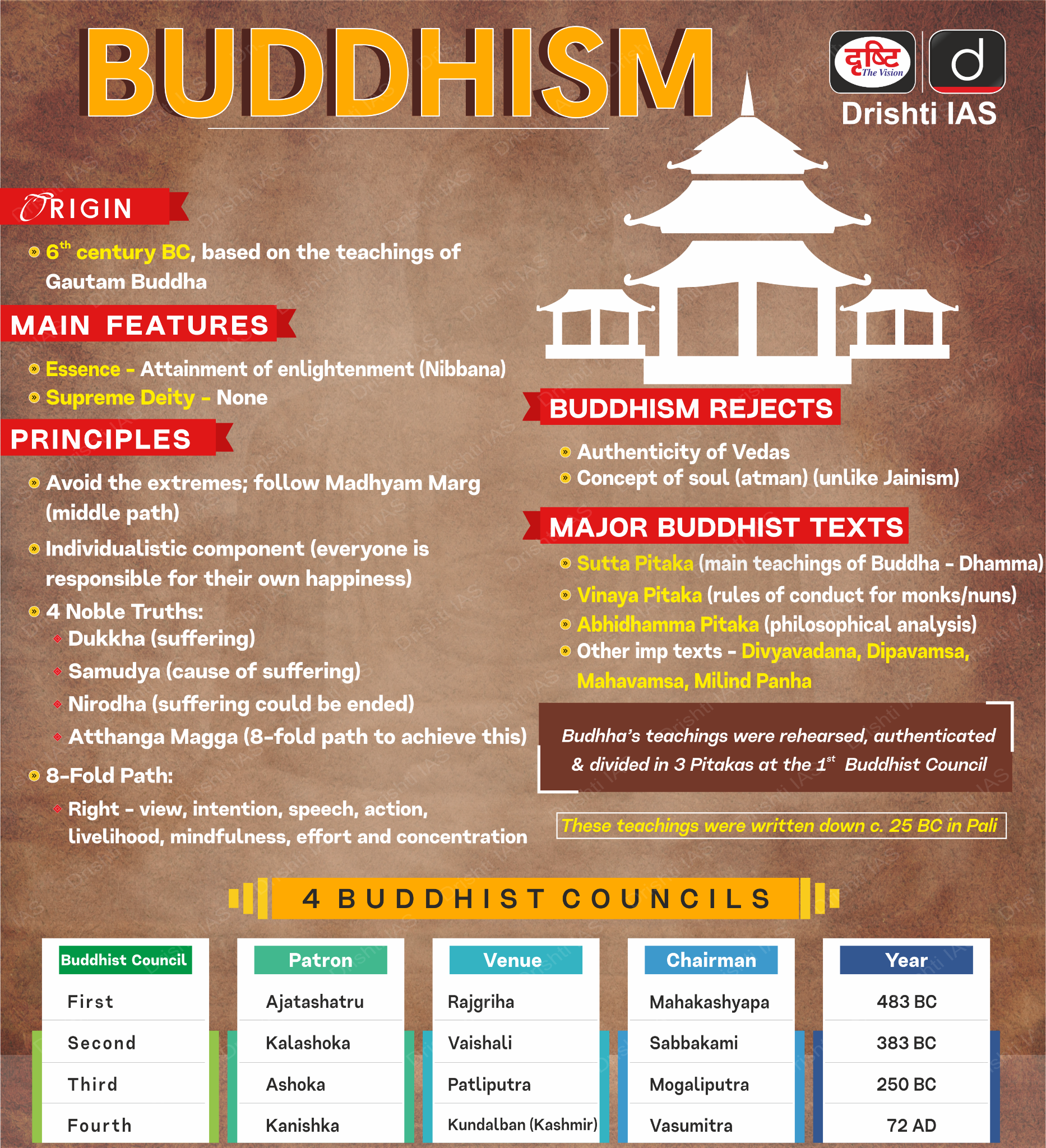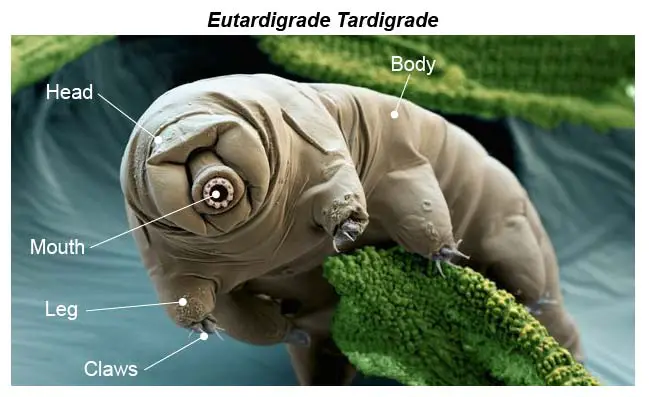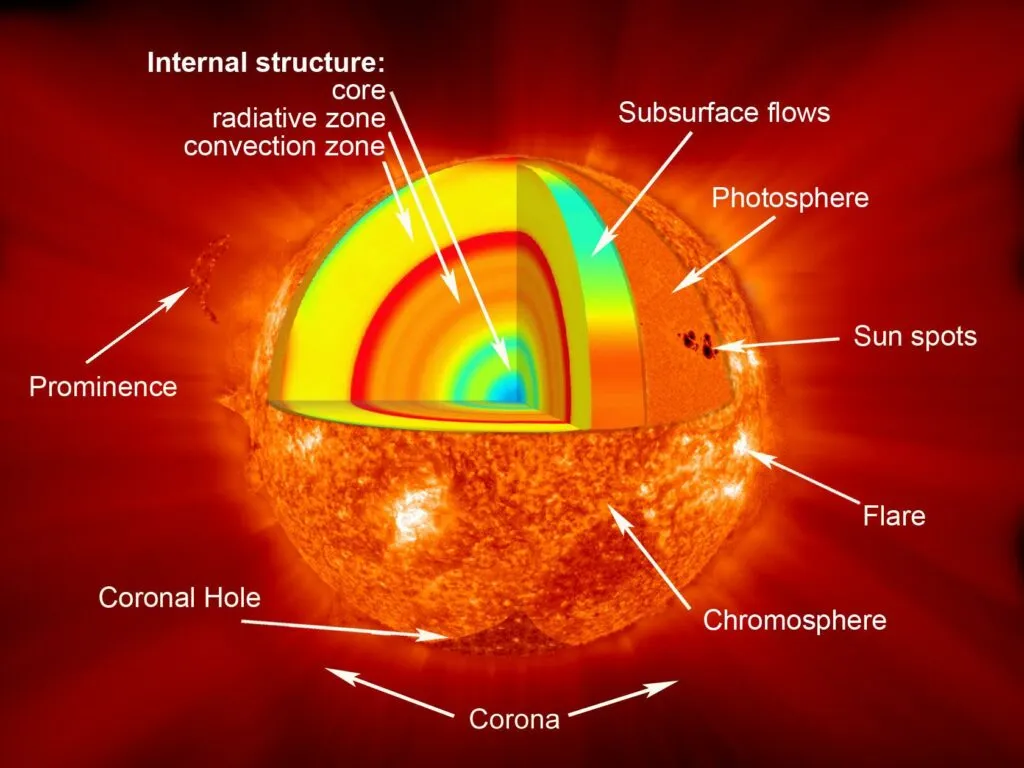SC Upholds UP Madarsa Act 2004
For Prelims: Supreme Court, High Court, National Council of Educational Research and Training (NCERT), Article 14, Article 15, Right to Education Act, 2009, Article 21A, Ms. Aruna Roy vs Union of India, 2002, Article 28, Democracy, Federalism, Secularism, State Legislature, Concurrent List, Article 30.
For Mains: Balancing minority rights and quality education in a secular democarcy.
Why in News?
Recently, the Supreme Court partially upheld the constitutional validity of the Uttar Pradesh Madrasa Education Board Act, 2004, overturning the Allahabad High Court ruling (March 2024) which declared it unconstitutional.
- However, the SC declared the Provisions pertaining to higher education (Kamil and Fazil) unconstitutional as they conflict with the University Grants Commission Act (UGC Act) 1956 which is governed by Entry 66 of List 1.
Why has the Supreme Court Upheld the UP Madrasa Education Board Act, 2004?
- Constitutional Validity: The Madrasa Act, 2004 effectively regulates the standards of education which aligns with the state’s obligation to ensure that students achieve a level of competency to participate actively in society.
- Legislative Competence: The Supreme Court affirmed that the Madarsa Act falls within the legislative competence of the State Legislature, specifically under Entry 25 of List 3 (Concurrent List) of the Constitution.
- Religious Education vs Religious Instruction: The Court distinguished between religious education and religious instruction.
- The Court in Ms. Aruna Roy vs Union of India, 2002 defined religious education as promoting communal harmony is permissible, while religious instruction, like mandatory worship, is prohibited in state-recognised institutions under Article 28.
- Immunity to Basic Structure: The constitutional validity of a statute cannot be challenged for the violation of the Basic Structure of the Constitution (Indira Nehru Gandhi vs Raj Narain Case, 1975), the statute must violate the Constitutional provisions pertaining to secularism to declare it unconstitutional.
- Allowing courts to strike down legislation for violating undefined concepts like democracy, federalism, and secularism introduces uncertainty in constitutional adjudication.
- State Regulation: The Court stated that the state government can make rules under the Act to ensure madrasas teach secular education along with religious instruction, without violating secularism.
- Minority Rights and Quality Education: The state should issue suitable directions to ensure that students studying in madrasas are not deprived of the quality of education that is made available by the State in other institutions.
- Minority Rights: By upholding the Act, the court has reinforced the right of religious minorities to establish educational institutions under Article 30 of the Indian Constitution.
- Focus on Inclusivity: The court’s directive to ensure that madrasa students can access quality education supports the integration of madrasa education within the broader educational framework of the state.
Indira Nehru Gandhi vs Raj Narain Case, 1975
- The Supreme court had used the Basic Structure doctrine for the first time in the Raj Narain case, 1975 to strike down a Constitutional Amendment.
- The judges on the Raj Narain Bench had differentiated between an ordinary statute and a Constitutional Amendment.
- Constitutional amendments are tested against the basic structure doctrine, not ordinary legislation.
- Then Chief Justice, A.N. Ray said that applying the Basic Structure doctrine to test the validity of a statute would amount to “rewriting the Constitution”.
- Other judges found the Basic Structure concept “too vague and indefinite to provide a yardstick to determine the validity of an ordinary law”.
- The court had opined that Constitutional Amendments and ordinary laws operate in different fields and were subject to different limitations.
Note: The court, while noting that minorities have the fundamental right under Article 30 of the Constitution to establish and administer educational institutions to impart religious or secular education, said the right was “not absolute”.
What is the UP Madrasa Education Board Act, 2004?
- About: It is a legislative framework aimed at regulating and formalising madrasa education in the state of Uttar Pradesh.
- It ensured that madrasas operate within a set of defined educational standards and norms.
- Madarsa Education: It aimed to integrate religious education alongside the secular curriculum prescribed by the National Council of Educational Research and Training (NCERT), blending formal education with Islamic teachings.
- Board of Madarsa Education: The Act led to the creation of the Uttar Pradesh Board of Madarsa Education, which was tasked with overseeing and regulating madrasa education in the state.
- Examination: It provides for conducting exams for madrasa students, with courses ranging from the ‘Maulvi’ level (equivalent to Class 10) to the ‘Fazil’ level.
Why did Allahabad HC Declare UP Madrasa Education Board Act, 2004 Unconstitutional ?
- Secularism: The Allahabad HC found that the Madarsa Act, 2004 violated secularism by making Islamic education compulsory at all levels while offering modern subjects as optional or absent.
- The government must provide secular education and cannot prioritize religious-based education over modern education.
- Violation of Fundamental Rights: Right to Education (Article 21A): The Act violated Article 21A, which mandates free and compulsory education for children between the ages of 6 and 14. The court rejected the claim that traditional education with a nominal fee met constitutional obligations.
- The Act violates Article 14 by creating discrimination between madrasa and mainstream school students.
- The Act violates Article 15 by establishing a separate, unequal education system for madrasa students.
- Conflict with Central Law: The court found that the Madarsa Act, 2004 conflicted with the University Grants Commission Act, 1956 (UGC Act).
- Only universities or institutions deemed to be universities under the UGC Act, 1956 have the authority to grant degrees.
Constitutional Provisions Related to Freedom of Religion:
- Article 25: It imparts freedom of conscience and free profession, practice and propagation of religion.
- Article 26: It gives freedom to manage religious affairs.
- Article 27: It sets freedom as to payment of taxes for promotion of any particular religion.
- Article 28: It gives freedom as to attendance at religious instruction or religious worship in certain educational institutions.
What are Implications of the SC Ruling on UP Madrasa Education Board Act, 2004?
- Regulation of Education Standards: Reinforces the state’s role in setting education standards to maintain quality.
- Protection of Minority Rights: Affirms the rights of religious minorities to establish educational institutions as long as they adhere to educational standards.
- Quality Education: Reinforces the state’s obligation to ensure all children receive quality education as per Article 21A of the Constitution.
- Inclusivity: Supports madrasas' integration into the broader educational framework.
Conclusion
The Supreme Court's decision to uphold the Uttar Pradesh Madrasa Education Board Act, 2004, emphasises the balance between religious education and secular standards. While affirming minority rights, it reinforces the state's authority to regulate education. The ruling may influence the regulation of religious education nationwide, ensuring inclusivity and quality.
|
Drishti Mains Question: Q. Examine the implications of the Supreme Court's ruling on the Uttar Pradesh Madrasa Education Board Act, 2004, particularly in relation to minority rights and the state's responsibility to provide secular education |
UPSC Civil Services Examination, Previous Year Questions (PYQs)
Prelims
Q.What was the exact constitutional status of India on 26th January, 1950?
(a) A Democratic Republic
(b) A Sovereign Democratic Republic
(c) A Sovereign Secular Democratic Republic
(d) A Sovereign Socialist Secular Democratic Republic
Ans: (b)
Q.Consider the following statements: (2020)
1. The Constitution of India defines its ‘basic structure’ in terms of federalism, secularism, fundamental rights and democracy.
2. The Constitution of India provides for ‘judicial review’ to safeguard the citizens’ liberties and to
preserve the ideals on which the Constitution is based.
Which of the statements given above is/are correct?
(a) 1 only
(b) 2 only
(c) Both 1 and 2
(d) Neither 1 nor 2
Ans: (d)
Mains
Q.What are the challenges to our cultural practices in the name of Secularism? (2019)
Q.How the Indian concept of secularism different from the western model of secularism? Discus (2018)
Q. Distinguish between religiousness/religiosity and communalism giving one example of how the former has transformed into the latter in independent India. (2017)
First Advance Estimates for Kharif Crop Production
For Prelims: Kharif crop, Digital Crop Survey, Digital Agriculture Mission (DAM), Girdawari method, Gross Domestic Product, Digital Public Infrastructure
For Mains: India’s Food Security and E-Technology in the Aid of Farmers
Why in News?
The Ministry of Agriculture and Farmers’ Welfare has recently announced the First Advance Estimates for Kharif crop production for the year 2024-25, revealing a record-breaking output in foodgrains and oilseeds.
- The report reflects the government’s growing use of technology and stakeholder input in agricultural planning and underscores a significant rise in production, especially in staple crops such as rice and maize.
What are the Key Highlights of the First Advance Estimates for Kharif Crop Production?
- Digital Crop Survey (DCS): For the first time, the DCS under the Digital Agriculture Mission (DAM) was used to estimate crop areas, replacing the manual Girdawari method in four states (Uttar Pradesh, Madhya Pradesh, Gujarat, and Odisha).
- Record Foodgrain Production: The total Kharif food grain production for 2024-25 is projected at 1647.05 Lakh Metric Tonnes (LMT), which is higher by 89.37 LMT as compared to 2023-24 and 124.59 LMT higher than average kharif foodgrain production, due to good production of Rice, Jowar and Maize.
- Crop-Wise Estimates:
- Implications:
- Food Security: The robust production across essential crops strengthens India’s food security by ensuring a steady supply for domestic consumption and potential exports.
- Economic Impact: Higher yields can benefit the economy by supporting rural income, stabilising prices, and boosting agricultural Gross Domestic Product (GDP) contributions.
- Policy Planning: The data-backed estimates assist policymakers in designing effective support programs and supply chain strategies.
Note:
- Girdawari is a crop harvest inspection, conducted by the Patwari to assess crop yield, quality, and changes in land conditions. Held twice yearly for Rabi and Kharif crops more than twice for areas under fruits and vegetables and is called Zaid Rabi and Zaid Kharif.
- It records changes in land rights, crop conditions, soil type, and updates needed in Khasra Girdawari (village maps).
What is the Digital Agriculture Mission?
- About: The DAM is aimed at transforming the agricultural sector through digital innovation and technology-driven solutions. This mission has a budget allocation of Rs. 2,817 crore and is structured to modernise agriculture by integrating data, digital tools, and technology to make farming more efficient, transparent, and accessible.
- Components of the DAM:
- AgriStack: A comprehensive Digital Public Infrastructure (DPI) focused on farmers.
- AgriStack includes: Farmers' Registry (includes farmers’ IDs, similar to Aadhaar), and Geo-referenced Village Maps (accurate mapping of agricultural lands), and Crop Sown Registry (database recording which crops are planted and their locations).
- AgriStack aims to streamline government services, reduce paperwork, and simplify the process for farmers to access benefits.
- Pilot projects have been conducted in six states to test the creation of Farmer IDs and the DCS.
- The six states include Uttar Pradesh, Gujarat, Maharashtra, Haryana, Punjab, and Tamil Nadu.
- Key Targets Include: Creating digital identities for 11 crore farmers over three years (6 crore in FY 2024-25, 3 crore in FY 2025-26, and 2 crore in FY 2026-27)
- Launching the DCS nationwide within two years, covering 400 districts in FY 2024-25 and all districts in FY 2025-26
- Krishi Decision Support System (DSS): A geospatial system that combines remote sensing data on soil, weather, water, and crops. The system offers real-time, data-driven insights to aid farmers in making informed decisions.
- Soil Profile Mapping: High-resolution soil maps will be created for agricultural land to improve soil health understanding and support sustainable farming.
- Digital General Crop Estimation Survey (DGCES): Utilises technology to enhance the accuracy of crop yield estimates, supporting productivity and policy planning.
- AgriStack: A comprehensive Digital Public Infrastructure (DPI) focused on farmers.
- Benefits:
- Enhanced Transparency: Accurate data enables more efficient and transparent processing for crop insurance, loans, and government schemes.
- Disaster Response: Improved crop maps will help in faster response during natural disasters, aiding disaster relief and insurance claims.
- Targeted Support: With digital infrastructure, farmers can receive real-time advisories, pest management guidance, and irrigation advice tailored to their needs.
- Employment Opportunities: The mission is expected to create direct and indirect jobs in agriculture, supporting around 2,50,000 trained local youth.
|
Drishti Mains Question: Q. Analyse the economic implications of food grain production in India, particularly in terms of food security and rural income. |
UPSC Civil Services Examination, Previous Year Questions (PYQs)
Prelims
Q. Consider the following statements: (2023)
- The Government of India provides Minimum Support Price for niger (Guizotia abyssinica) seeds.
- Niger is cultivated as a Kharif crop.
- Some tribal people in India use niger seed oil for cooking.
How many of the above statements are correct?
(a) Only one
(b) Only two
(c) All three
(d) None
Ans: (c)
Mains:
Q. How is science interwoven deeply with our lives? What are the striking changes in agriculture triggered off by science-based technologies? (2020)
World Cities Report 2024
For Prelims: UN-Habitat, Humid Climate, Greenhouse Gas Emissions, Cyclone, Green Gentrification, UN General Assembly, Urbanisation, Inequality, Methane, Landfills, Urban Heat Island Effect, Electric Vehicles, Green Roofs, Urban Forests,Urban Planning, Green Bonds.
For Mains: Contribution of cities in global warming. Role of cities in tackling global warming.
Why in News?
Recently, the UN-Habitat has released the World Cities Report 2024: Cities and Climate Action.
- The report highlighted that the cities are among the largest contributors to greenhouse gas emissions, yet they face disproportionately severe impacts of climate change.
What are the Key Findings of the World Cities Report 2024?
- Temperature Increases: By 2040, nearly two billion people in urban areas will experience a 0.5°C rise in temperature.
- 14% of cities are expected to transition to drier climates while at least 900 cities could transition to more humid climates, especially tropical ones.
- Sea-Level Rise: By 2040, over 2,000 cities in low coastal areas, many under 5 metres above sea level, will expose more than 1.4 billion people to higher risks from sea-level rise and storm surges.
- Disproportionate Impact: Urban areas are disproportionately affected by climate change but are also significant contributors to greenhouse gas emissions (GHGs) making them more vulnerable to climate shocks like floods and cyclones.
- Investment Gap: To build climate-resilient systems, cities need an estimated USD 4.5 to USD 5.4 trillion per year. However, current financing stands at just USD 831 billion, highlighting a massive funding shortfall.
- Riverine Flooding: Flood exposure in cities has grown significantly, increasing 3.5 times faster than in rural areas since 1975.
- By 2030, 517 million people in cities will be exposed to riverine flooding, representing 14% of the global urban population.
- Decline of Green Spaces: Urban green spaces have significantly declined from 19.5% in 1990 to 13.9% in 2020 contributing to both environmental and social challenges in cities.
- Increased Vulnerability: Informal settlements (slums) are key drivers of vulnerability, as they are often located in flood-prone, low-lying, or precarious areas.
- Lack of protective infrastructure, and legal recognition make them more exposed to climate impacts and unable to invest in upgrades due to eviction fears.
- Green Gentrification: Some climate interventions, like the creation of parks, have resulted in green gentrification leading to displacement of underprivileged communities.
- Gentrification means a low-income neighborhood changes due to an influx of wealthier residents and businesses, leading to rising property values and rents.
UN-Habitat
- Mandate: Established by the UN General Assembly, UN-Habitat focuses on promoting socially and environmentally sustainable urban development.
- Global Focal Point: It serves as the key agency within the UN system for urbanisation and human settlement issues.
- Core Mission: Aims to create inclusive, safe, resilient, and sustainable cities and communities, reducing inequality, discrimination, and poverty.
- Global Presence: Operates in over 90 countries to promote transformative change in urban areas through knowledge sharing, policy advice, and technical assistance.
- Strategic Approach (2020-2023 Plan): Emphasises a holistic and integrated strategy to address 21st-century urban challenges.
- Four Main Roles:
- Think: Engages in normative work, research, capacity-building, policy formulation, and setting global standards.
- Do: Offers technical assistance and crisis response projects to support sustainable urbanisation.
- Share: Mobilises advocacy, communication, and outreach to inspire change in development plans and investments.
- Partner: Works with governments, intergovernmental bodies, civil society, academia, and the private sector to address urbanisation challenges.
How Urban Areas Contribute to Global Warming?
- Energy Consumption: Urban areas account for 71 to 76% of CO2 emissions from global final energy use due to concentration of energy-intensive industries, transportation, and high-density residential and commercial buildings.
- Urban lifestyles tend to be energy-intensive, with high demand for electricity, heating, and cooling systems in buildings.
- Industrial Activities: Factories and power plants that burn fossil fuels, contributing to the release of various GHGs, including carbon dioxide (CO2), methane (CH4), and nitrous oxide (N2O).
- Land Use Changes: Clearing land for housing, infrastructure, and industrial developments reduce the Earth's ability to absorb and store carbon.
- The growth of urban land areas is projected to more than triple between 2015 and 2050 which will lead to deforestation and habitat destruction.
- Waste Generation and Landfills: As organic waste decomposes in landfills, it releases methane, a greenhouse gas with a global warming potential many times greater than CO2.
- Urban Heat Island Effect: Cities, particularly those with large areas of concrete, asphalt, and buildings, absorb and retain heat more than rural areas, creating the urban heat island effect.
How Cities are Affected by Global Warming?
- Heatwaves: Global warming is causing an increase in global temperatures and the frequency of heatwaves. E.g., Heatwaves are becoming more severe in India.
- Urban Heat Islands (UHIs): UHIs are metropolitan areas significantly warmer than surrounding regions due to heat-absorbing surfaces and energy use.
- Coastal Flooding: As temperatures rise, glaciers and ice sheets melt, adding water to the oceans and causing sea levels to rise.
- This inundates coastal areas, displaces communities, and disrupts ecosystems.
- Wildfire Season: Wildfire season has been prolonged and intensified due to warming temperatures and long-term drought, increasing the risk of fires.
What are India’s Initiatives to Tackle Warming in Urban Areas?
Way Forward
- Resilient Infrastructure: Infrastructure plays a central role in reducing GHGs, responsible for 79% of total emissions and is key to meeting 72% of SDG targets.
- Infrastructure should be designed to withstand climate impacts and address the social and environmental factors that heighten community vulnerability.
- Green Energy: Electrification of public transport and the promotion of electric vehicles reduce the carbon footprint of personal and mass mobility.
- Diverse Financing Mix: To bridge finance gaps, well-structured loans and credit facilities can help cities invest in long-term climate solutions.
- Affordable financing models, including climate-friendly loans and green bonds, that can help cities secure the capital needed for climate projects.
- Urban Carbon Sinks: Cities can offset emissions by investing in nature-based solutions such as green roofs, urban forests, and parks that absorb carbon dioxide.
- Compact urban planning reduces urban sprawl, cutting the need for extensive travel and associated emissions.
- Circular Waste Management: Effective waste management practices, such as recycling and composting, prevent methane emissions from landfills.
- Whole-of-Society Approach: Vertical coordination between government levels and horizontal coordination across sectors and stakeholders is key to ensuring consistent, inclusive, and effective climate action.
- Strengthening Local Capacities: Local governments are best positioned to develop tailored, locally appropriate solutions as they understand the specific challenges and needs of their communities.
- Encouraging lifestyle changes, such as opting for walking, biking, and carpooling over private vehicle use, can further reduce demand.
Conclusion
The World Cities Report 2024 underscores the urgent need for cities to address climate change impacts, highlighting both their vulnerability and contribution to global warming. Effective solutions require resilient infrastructure, green energy, and circular waste management, supported by diverse financing and localised actions to create climate-resilient and inclusive urban environments.
|
Drishti Mains Question: Q. Discuss how urban areas contribute to global warming and the measures required to mitigate their impact. |
UPSC Civil Services Examination, Previous Year Question (PYQ)
Prelims:
Q.Consider the following statements: (2021)
Statement 1: The United Nations Capital Development Fund (UNCDF) and the Arbor Day Foundation have recently recognized Hyderabad as 2020 Tree City of the World.
Statement 2: Hyderabad was selected for the recognition for a year following its commitment to grow and maintain the urban forests.
Which one of the following is correct in respect of the above statements?
(a) Both Statement 1 and Statement 2 are correct and Statement 2 is the correct explanation for Statement 1
(b) Both Statement 1 and Statement 2 are correct but Statement 2 is not the correct explanation for Statement 1
(c) Statement 1 is correct but Statement 2 is not correct
(d) Statement 1 is not correct but Statement 2 is correct
Ans: (d)
Q.Consider the following statements: (2021)
1. ‘Right to the City’ is an agreed human right and the UN-Habitat monitors the commitments made by each country in this regard.
2. ‘Right to the City’ gives every occupant of the city the right to reclaim public spaces and public participation in the city.
3. Right to the City’ means that the State cannot deny any public service or facility to the unauthorised colonies in the city.
Which of the statements given above is/are correct?
(a) 1 only
(b) 3 only
(c) 1 and 2
(d) 2 and 3
Ans: (c)
Q.With reference to the role of UN-Habitat in the United Nations programme working towards a better urban future, which of the statements is/are correct?(2017)
1. UN-Habitat has been mandated by the United Nations General Assembly to promote socially and environmentally sustainable towns and cities to provide adequate shelter for all.
2. Its partners are either governments or local urban authorities only.
3. UN-Habitat contributes to the overall objective of the United Nations system to reduce poverty and to promote access to safe drinking water and basic sanitation.
Select the correct answer using the code given below:
(a) 1, 2 and 3
(b) 1 and 3 only
(c) 2 and 3 only
(d) 1 only
Ans: (b)
Mains
Q.The frequency of urban floods due to high intensity rainfall is increasing over the years. Discussing the reasons for urban floods, highlight the mechanisms for preparedness to reduce the risk during such events. (2016)
Urbanisation and Industrialisation Depleting Groundwater
For Prelims: Central Groundwater Board (CGWB), India Meteorological Department (IMD), PMKSY, Jal Shakti Abhiyan, Atal Bhujal Yojana (ABHY)
For Mains: National Aquifer Mapping and Management (NAQUIM) programme, Socio-economic and environmental consequences of groundwater depletion in India, Role of Urbanisation, Government initiatives on groundwater recharge, Issues in Groundwater Management, Strategies for sustainable urban water management.
Why in News?
A recent study titled Detection and Socio-Economic Attribution of Groundwater Depletion in India, highlighted the significant impact of urbanisation and industrialisation on groundwater depletion in five Indian states.
What are the Key Findings of the Study?
- Affected States: The study raises serious concerns for five hotspots namely Punjab and Haryana, Uttar Pradesh, West Bengal, Chhattisgarh and Kerala:
- Punjab and Haryana (Hotspot I): Most affected, with 64.6 billion cubic metres of groundwater lost in two decades.
- Uttar Pradesh (Hotspot II): Irrigation demand fell by 8%, while domestic and industrial use rose by 38%, causing a 4% groundwater decline.
- West Bengal (Hotspot III): Minimal irrigation growth (0.09%), but a 24% rise in other uses, led to a 3% groundwater drop.
- Chhattisgarh (Hotspot IV): Increased use in all sectors led to declining groundwater levels.
- Kerala (Hotspot V): Groundwater declined by 17% despite high rainfall, due to a 36% irrigation drop and 34% increase in other uses.
- Primary Cause:
- Rapid Urbanisation: It increased by 10 per cent between 2001 and 2011 and industrialisation, especially in urban areas like Faridabad and Gurgaon which are not heavily reliant on agriculture, but saw sharp declines in groundwater levels since 2012. It increased by 10% between 2001 and 2011, accompanied by industrialization, particularly in urban areas like Faridabad and Gurgaon, which are less reliant on agriculture but have experienced sharp declines in groundwater levels since 2012.
- Rising Demand: Increased domestic and industrial water consumption, coupled with only a slight decrease in rainfall during the study period.
Note:
- The researchers used data from the Central Groundwater Board (CGWB), India Meteorological Department (IMD), and Gravity Recovery and Climate Experiment (GRACE) satellite between 2003 and 2020.
How is Urbanisation Accelerating Groundwater Depletion?
- Reduced Natural Recharge: Impervious surfaces limit rainwater infiltration, hindering natural groundwater recharge.
- Over-Extraction: Limited alternative sources in cities lead to excessive, unregulated groundwater extraction.
- Urban expansion drives high water demand, and it is heavily reliant on groundwater, especially where surface water is scarce.
- Pollution: Urban waste and untreated sewage contaminate groundwater, reducing clean water availability and increasing extraction from deeper sources.
- Higher Extraction Costs: Deeper water tables from overuse raise pumping costs, with subsidies sometimes exacerbating unregulated extraction.
What are the Major Causes of Groundwater Depletion?
- Over-Reliance on Groundwater: Irrigation accounts for approximately 80% of India's total water usage, with a significant portion of this water drawn from groundwater. As the demand for food rises, the extraction of groundwater for irrigation is increasing, leading to its depletion.
- Poor Water Management: Inefficient water use, leaking pipes, and inadequate infrastructure for capturing and storing rainwater all contribute to the depletion of groundwater.
- Decline in Traditional Water Conservation Methods: Practices like rainwater harvesting, step wells, and check dams have decreased, leading to missed opportunities for groundwater recharge.
- Climate Change: Rising temperatures and shifts in precipitation patterns can impact the recharge rates of groundwater aquifers, making them more susceptible to depletion.
- Factors like deforestation, which leads to soil erosion, can reduce the amount of water able to seep into the ground, diminishing the natural recharge of groundwater aquifers.
- Climate change events such as droughts, flash floods, and disrupted monsoon seasons are intensifying pressure on India's groundwater resources.
What are the Impacts of Groundwater Depletion?
- Reduced Crop Yields: Depleted groundwater limits irrigation, impacting crop productivity and food security.
- Urban Water Scarcity: Cities increasingly rely on groundwater, and depletion leads to higher costs, reduced water availability, and strain on municipal services.
- Public Health Risks: India is home to 18% of the world’s population, but only holds 4% of the world’s freshwater resources.
- Declining water quality from overuse and contamination increases the spread of waterborne diseases and heavy metal exposure.
- Ecosystem Loss: Lowered water tables affect wetlands, forests, and aquatic ecosystems, disrupting biodiversity.
- Increased Drought Risks: Groundwater depletion reduces resilience to droughts, which are projected to become more frequent with climate change.
What are India’s Initiatives for Sustainable Groundwater Management?
What are the Challenges in Groundwater Management in India ?
- Overexploitation:The Green Revolution increased the need for groundwater to support food security, leading to widespread borewell installations.
- The Central Groundwater Board reports 17% of blocks are overexploited, with significant depletion in north-western, western, and southern India.
- Climate Induced Challenges: Erratic rainfall and increased pollution have exacerbated water scarcity.
- Groundwater serves 85% of rural domestic water, 45% of urban water, and over 60% of agricultural irrigation, impacting multiple sectors.
- Weak Regulatory Framework: Regulations currently cover only 14% of overexploited blocks, allowing unchecked groundwater extraction.
- Lack of local regulatory enforcement in early stages of depletion exacerbates water scarcity.
- Community Involvement and Institutional Weaknesses:
- Participatory Groundwater Management (PGM) has empowered communities in some regions, but success is limited by weak institutions and supply failures.
- Informal groundwater committees often become inactive after project completion, lacking sustainability in the long term.
- Subsidies and Usage:
- Subsidized power for water pumping encourages excessive groundwater extraction, leading to rapid depletion.
- Industrial and domestic usage rose by 34%, while irrigation-related groundwater demand dropped by 36%.
What are the Strategies for Sustainable Groundwater Management?
- Address Demand and Supply:
- Supply Side: Initiatives like watershed management and aquifer recharge are vital but need complementary demand-side measures.
- Demand Side: Promoting water-efficient irrigation (e.g., drip systems) and encouraging less water-intensive crops can reduce stress on groundwater resources.
- Community Participation:
- Enhanced community involvement in governance improves sustainability, as shown by the PGM approach in regions with defined aquifers.
- Empowering local institutions and supporting capacity development at the community level is essential for effective management.
- Regulatory Enhancements:
- Comprehensive regulatory measures at local levels before blocks reach the overexploited stage can prevent further depletion.
- Long-term viability of institutions like Water User Associations (WUAs) is crucial for sustained groundwater management.
- Cross Sectoral Reform:
- Cross-sectoral reforms that reduce incentives for groundwater overexploitation, such as revising power subsidies, are critical for sustainable usage.
- Repurposing support for climate-smart agriculture and aligning energy policies with water conservation objectives can aid in sustainable resource use.
|
Drishti Mains Question Q. Analyze the impact of urbanization and industrialization on India’s groundwater resources, noting states with significant depletion. Discuss associated challenges and propose mitigation measures. |
UPSC Civil Services Examination, Previous Year Question (PYQ)
Prelims
Q.1 Which one of the following ancient towns is well known for its elaborate system of water harvesting and management by building a series of dams and channelizing water into connected reservoirs? (2021)
(a) Dholavira
(b) Kalibangan
(c) Rakhigarhi
(d) Ropar
Ans: (a)
Q.2 With reference to ‘Water Credit’, consider the following statements: (2021)
- It puts microfinance tools to work in the water and sanitation sector.
- It is a global initiative launched under the aegis of the World Health Organization and the World Bank.
- It aims to enable the poor people to meet their water needs without depending on subsidies.
Which of the statements given above are correct?
(a) 1 and 2 only
(b) 2 and 3 only
(c) 1 and 3 only
(d) 1, 2 and 3
Ans: (c)
Mains
Q.1 What are the salient features of the Jal Shakti Abhiyan launched by the Government of India for water conservation and water security? (2020)
Q.2 Suggest measures to improve water storage and irrigation system to make its judicious use under the depleting scenario. (2020)
1st Asian Buddhist Summit
Why in News?
Recently, the first Asian Buddhist Summit (ABS) was organised by India’s Ministry of Culture and the International Buddhist Confederation (IBC) in New Delhi, India.
What are the Key Highlights of the 1st ABS?
- About: It's a significant international gathering aimed at fostering dialogue, promoting understanding, and addressing contemporary challenges in the Buddhist community across Asia.
- Theme: “Role of Buddha Dhamma in Strengthening Asia” which emphasises Asia's collective, inclusive, and spiritual development.
- Key Themes of the Summit:
- Buddhist Art, Architecture, and Heritage: Highlights the rich cultural legacy of Buddhist landmarks like Sanchi Stupa and Ajanta caves.
- Buddha Cārikā and Dissemination of Buddha Dhamma: Focuses on Buddha’s travels (Buddha Cārikā) and his role in spreading teachings across India.
- Role of Buddhist Relics and its Relevance in Society: Buddha relics inspire devotion and mindfulness, support local economies through pilgrimage tourism, and promote peace and compassion.
- Role of Buddhist Literature and Philosophy in the 21st Century: Demonstrates Buddhism’s enduring relevance in modern philosophical discourse.
- Buddha Dhamma in Scientific Research and Well-being: Integrates Buddhist principles with scientific research to enhance mental and physical health.
- Exhibition: A special exhibition titled "India as the Dhamma Setu (Bridge) connecting Asia" highlighted India's role in spreading Buddhism across Asia.
- Significance for India: The summit supports India’s Act East Policy and Neighborhood First Policy, focusing on collective, inclusive, and spiritual development in Asia.
Note:
- Buddha Bhoomi Vandan Yatra was organised by the Indian Council of Cultural Relations (ICCR) in 2022 that facilitated Buddhist scholars from countries like Japan, South Korea, and Sri Lanka to explore India’s Buddhist sites and learn about its Buddhist heritage.
- The IBC is a Buddhist umbrella body based in New Delhi that serves as a common platform for Buddhists worldwide.
What are India’s Recent Initiatives to Support Buddhism?
- Buddhist Tourism Circuit in India
- First Global Buddhist Summit
- Asian Buddhist Conference for Peace
- Classical Status to Pali Language
- International Abhidhamma Diwas
UPSC Civil Services Examination, Previous Year Questions (PYQs)
Prelims
Q.With reference to the religious history of India, consider the following statements: (2020)
1. Sthaviravadins belong to Mahayana Buddhism.
2. Lokottaravadin sect was an offshoot of Mahasanghika sect of Buddhism.
3. The deification of Buddha by Mahasanghikas fostered Mahayana Buddhism.
Which of the statements given above is/are correct?
(a) 1 and 2 only
(b) 2 and 3 only
(c) 3 only
(d) 1, 2 and 3
Ans: (b)
Q.Consider the following: (2019)
1. Deification of the Buddha
2. Treading the path of Bodhisattvas
3. Image worship and rituals
Which of the above is/are the feature/features of Mahayana Buddhism?
(a) 1 only
(b) 1 and 2 only
(c) 2 and 3 only
(d) 1, 2 and 3
Ans: (d)
Q.With reference to the religious history of India, consider the following statements: (2016)
1. The concept of Bodhisattva is central to the Hinayana sect of Buddhism.
2. Bodhisattva is a compassionate one on his way to enlightenment.
3. Bodhisattva delays achieving his own salvation to help all sentient beings on their path to it.
Which of the statements given above is/are correct?
(a) 1 only
(b) 2 and 3 only
(c) 2 only
(d) 1, 2 and 3
Ans: (b)
Tardigrades Genes for Innovation
Why in News?
Recently, researchers are exploring a range of unique tardigrade features to inspire advancements in medicine, biotechnology, and space exploration.
What are the Key Facts About Tardigrades?
- About: Tardigrades (Tardigrada), also known as water bears or moss piglets, are microscopic, eight-legged creatures without a backbone.
- Species and Evolution: They belong to the phylum Tardigrada.
- The earliest known fossils date from around 90 million years ago, in the Cretaceous Period (145 - 66 million years ago).
- Molecular dating suggests they originated at least 600 million years ago.
- Adaptations: Tardigrades are known for their ability to withstand extreme radiation, starvation, lack of oxygen and water, and subzero temperatures.
- They can inhabit extreme ecosystems like the Arctic, deep-sea floors, deserts, and even the vacuum of space.
- Cryptobiosis: Tardigrades can enter cryptobiosis, halting biological activity to survive extreme conditions like dehydration, freezing, and radiation damage.
- The DODA1 gene helps synthesise betalains, a type of antioxidants that likely protect cells from radiation damage and allows them to recover and resume normal activities afterward.
How Tardigrade Properties Could be Applied for Human Use?
- Intrinsically Disordered Proteins (IDPs): Secretory-abundant heat-soluble IDPs synthesised in microbes improve desiccation (completely drying up) tolerance, potentially enabling resilient microbes and organisms.
- Small Heat Shock Proteins: When cloned into microbes, these proteins can improve microbial survival and stability in hot or dry environments.
- Protein Stability: Tardigrades’ ability to stabilise their proteins in extreme environments could be used to improve the shelf life and effectiveness of vaccines, antibodies, and enzymes used in medicine.
- Cell Preservation: Tardigrades' mechanisms to resist cellular damage could be used for cell therapies, aiding in transport and storage, and ultimately improving treatment delivery.
- Researchers may develop enhanced protective measures for humans and materials in outer space.
India Bids to Host the 2036 Olympics
The Indian Olympic Association (IOA) submitted a formal Letter of Intent to the International Olympic Committee (IOC), expressing the nation's desire to host the 2036 Olympic Games.
- India’s bid aligns with the IOC’s sustainability policy, which encourages using existing infrastructure and minimal new construction to lower costs and reduce the carbon footprint.
- Only three Asian countries have ever hosted the Olympics- China, South Korea and Japan, with Japan hosting the games twice in 1964 and 2020.
- IOA is registered as a Non-Profit Organisation under the Societies Registration Act, 1860. It is recognized by the Ministry of Youth Affairs and Sports.
- It governs the Olympic Movement and Commonwealth Games in India; oversees athletes' participation in Olympics, Commonwealth Games, Asian Games, and related multi-sport events.
- The IOC is a non-governmental international organisation based in Lausanne, Switzerland that came into existence in 1894.
- The IOC aims to ensure the regular holding of the Olympic Games and foster Olympism and the Olympic movement.
Differential Rotation of the Sun
The Sun exhibits a unique rotational pattern called differential rotation, where different parts rotate at varying speeds.
- The Sun's rotation period varies by latitude, with the equator rotating in 26.5 days, the sunspot zone (16° north) in 27.3 days, and the poles in 31.1 days.
- The Sun has a north and south pole, and rotates on its axis. However, unlike Earth which rotates at all latitudes every 24 hours, the Sun rotates every 25 days at the equator and takes progressively longer to rotate at higher latitudes. This is known as differential rotation.
- Sunspots are areas that appear dark on the surface of the Sun. They appear dark because they are cooler than other parts of the Sun’s surface.
- The Sun's core temperature is 15 million degrees K, and its surface temperature is 6,000 degrees K, creating a high-pressure gaseous state known as plasma.
- The Sun has a north and south pole, and rotates on its axis. However, unlike Earth which rotates at all latitudes every 24 hours, the Sun rotates every 25 days at the equator and takes progressively longer to rotate at higher latitudes. This is known as differential rotation.
- Despite extensive research, the underlying cause of differential rotation remains an unsolved puzzle for solar physicists.
3rd Edition of MAHASAGAR
Recently, the 3rd edition of MAHASAGAR, an Indian Navy’s flagship outreach for virtual interaction among IOR littorals, was conducted.
- MAHASAGAR stands for Maritime Heads for Active Security And Growth for All in the Region. It was started in 2023 and is conducted bi-annually.
- Theme – “Training Cooperation to Mitigate Common Maritime Security Challenges in the Indian Ocean Region (IOR)”.
- The 3rd edition of MAHASAGAR was attended by IOR Littorals viz. Bangladesh, Comoros, Kenya, Madagascar, Maldives, Mauritius, Mozambique, Seychelles, Sri Lanka and Tanzania.
Read More: SAGAR Vision
DCGI's New Regulations for Imported Cosmetics
Recently, the Drugs Controller General of India (DCGI) established new guidelines to enhance the safety, quality, and regulatory compliance of imported cosmetics in India.
- The cosmetic market in India was valued at USD 8.1 billion in 2023, with projections to reach USD 18.4 billion by 2032.
- Guidelines:
- Cosmetics can only be imported if their expiration date is at least six months from the date of import.
- Cosmetics containing hexachlorophene or those tested on animals after post-November 2014 are banned from being imported.
- Hexachlorophene, a topical antibacterial cleanser previously used to clean skin before surgery and prevent infections, has been banned in cosmetics due to safety concerns.
- No cosmetics banned in the country of origin can be imported unless for specific purposes (e.g., testing, analysis).
- The Cosmetic Rules, 2020 state that no cosmetic should convey any false or misleading information to the user.
- Importers of new cosmetic products must seek approval from the Central Licensing Authority, with proof of safety and efficacy.
- DCGI: The DCGI heads the Central Drugs Standard Control Organisation (CDSCO), which is responsible for ensuring quality drugs supply across the country.

